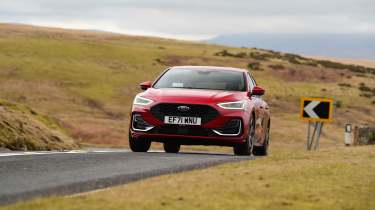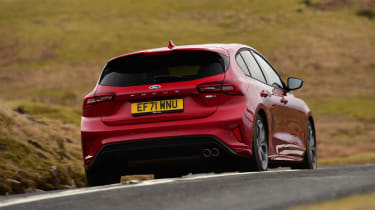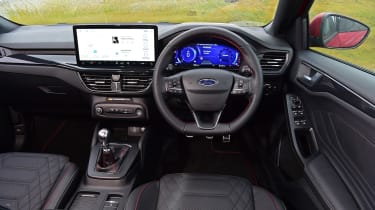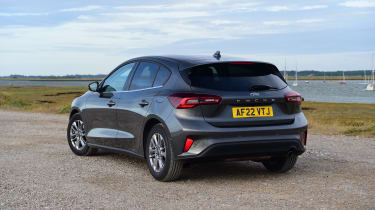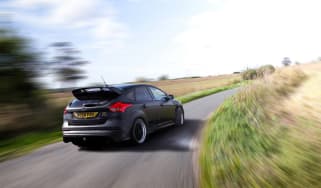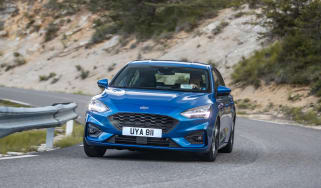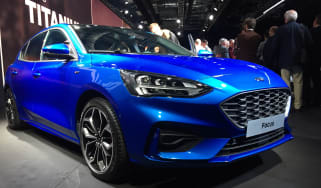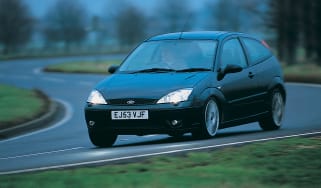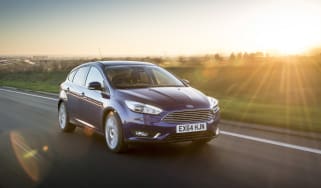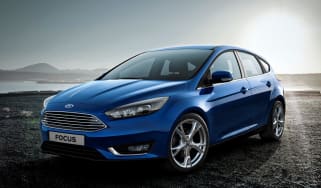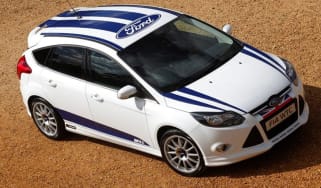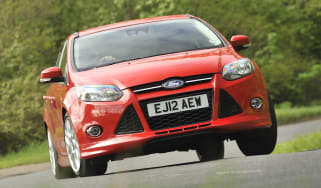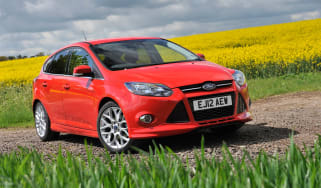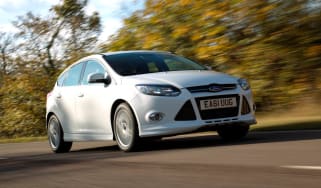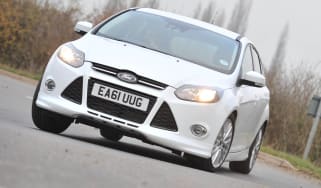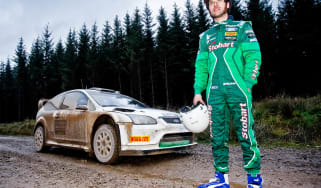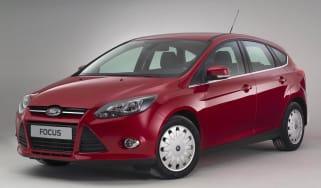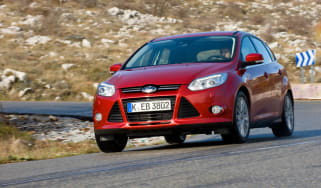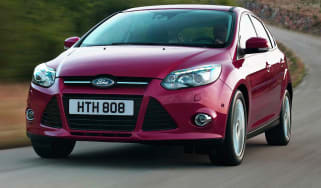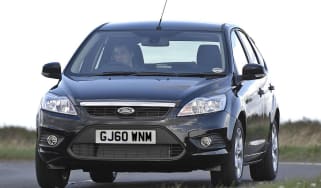Ford Focus review – everyday hero back to its best
An uncomplicated everyday car that drives well and does everything you could reasonably expect
The Ford Focus has long been the standard-bearer of how an everyday family hatchback should drive, defying its humble origins with a dynamic polish previously unseen in the class. This has made the Focus an incredibly successful model for Ford over its four generations, racking up big sales across both Europe and other international markets. Yet the car industry is changing. Not only have SUVs eaten into the midsize hatchback market, but the drive towards electrification is also making brilliant cars like the Focus an even more difficult sell to consumers.
The current-generation Focus has been with us since 2018, and in spite of the threats retains many of the key elements that made its predecessors so impressive. It’s not as glamorous or futuristic as many of its rivals, but to help address this Ford gave the Focus a major update in 2022, introducing a new look outside, an updated set of powertrains and a slick new interior.
Some might ask the question of whether an old-fashioned family hatchback like the Ford Focus is still relevant? Our answer to that is a definite yes, because it remains a superbly engineered package that’s perfectly suited for the world that many everyday car owners still live in.
More reviews
Group tests
In-depth reviews
Reviews
Granted, it’s more expensive than it was, but still remains much more affordable than many modern EVs, and with a notable improvement in efficiency over the last four years is also more affordable to run. Yet it’s the Focus’s chassis that remains its strongest asset, namely its ability to drive with more poise, polish and sophistication than all of its direct rivals. The Focus is a brilliant car, so buy one while you can.
Ford Focus: in detail
- Engine, gearbox and technical highlights > All Focus models have three-cylinder engines with manual or dual-clutch transmissions
- Performance and 0-62mph time > Performance on the road is defined by strong torque delivery, helping it feel quicker than the numbers suggest
- Ride and handling > Extremely competent, entertaining even, the Focus’s driving experience doesn’t disappoint
- MPG and running costs > High MPG and low running costs mean the Focus is still a strong value proposition
- Interior and tech > The cabin is functional and well built. Tech has been totally overhauled with a big new touchscreen interface
- Design > Facelift has brought a more grown-up look that follows another new aesthetic direction for Ford
Prices, specs and rivals:
The updated Ford Focus range is extensive in terms of its available trims and its two body styles, but the engine range has condensed, with diesel now off the menu.
There are two petrol engines available on the standard Focus, not including the hot ST. Both are EcoBoost three-cylinders and come with a six-speed manual as standard, or an optional seven-speed dual-clutch transmission. These four options are available in all trim levels and will cost you an extra £1380 extra for the high-spec 153bhp engine, and £1890 for the dual-clutch.
There’s not really any such thing as a base model Focus in 2023, as the Titanium specification now opens the range at £27,060. This makes the most inexpensive Focus nearly £10,000 more than it was at its launch in 2018. Equipment levels have grown to compensate, giving the Titanium features such as climate control, alloy wheels, LED headlights and a big new 13.2-inch infotainment system as standard. The next rung up the ladder is the Titanium X, which adds larger wheels, heated synthetic leather seats and a heated steering wheel, among other things, to the mix.
From here the range diverges between ST-Line and Active models, both coming with their own X specification that further lifts standard equipment. They’re also priced the same at £27,890 (or £30,090 for the X). Active models, despite the rugged styling additions, don’t feature enhanced off-road capability, and all variants are also available in the estate body shape.
Topping the range is the Focus ST priced from £36,855, which is available in both a six-speed manual or eight-speed automatic. It’s also the only four-cylinder Focus available, and has an optional Track Pack on the options list that includes lighter flow-formed wheels, Brembo brakes and unique coilover suspension.
All midsize hatchback rivals have gone through their own price rises over the last few years, so despite the Focus’s significant inflation, it still sits in a similar position in the hatchback class. Using the £30,450 Focus ST-Line fitted with the 153bhp engine and dual-clutch transmission as our comparison spec, an equivalent Peugeot 308 or Vauxhall Astra GS undercut the Ford in price by just over £1000, but then also have slightly less power. A Golf R-Line on the other hand is around £1000 more at £31,400, while straying further into the premium space will find you a BMW 118i M Sport for £32,595.
The most compelling hatchback in this class at the moment is Honda’s new Civic. Starting at £33,720, the model range is limited and relatively expensive, but it drives brilliantly and has a well-engineered and curiously rapid hybrid powertrain that’s also very efficient. It’s also larger than many rivals, for better or worse, and has plenty of equipment to back up its high base price.

